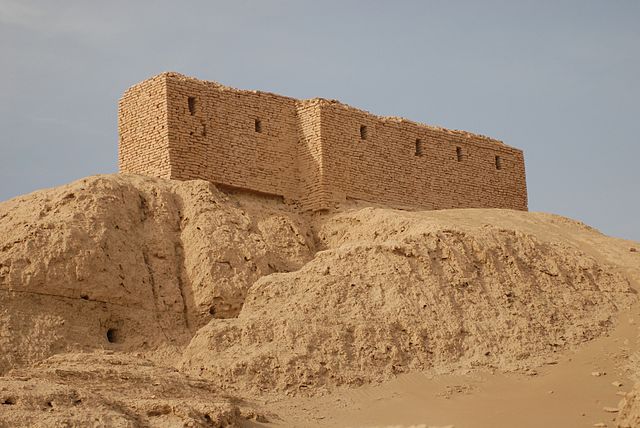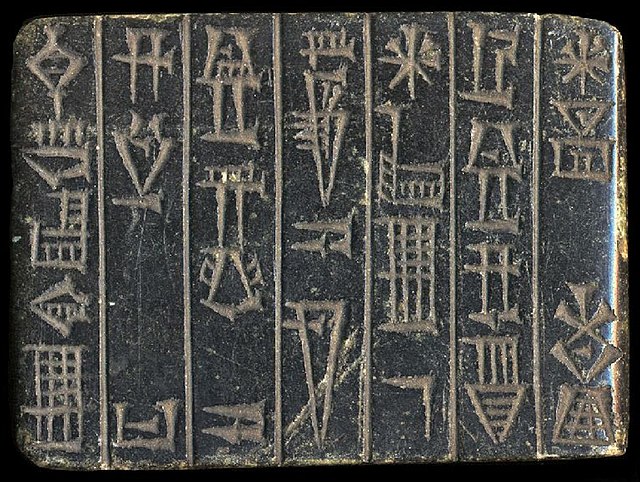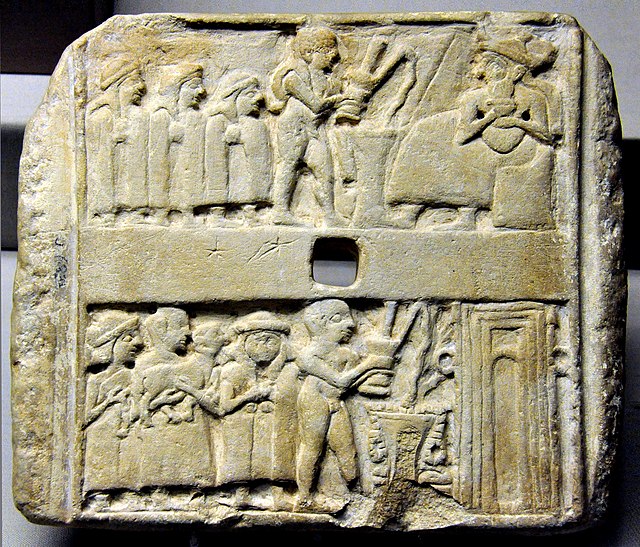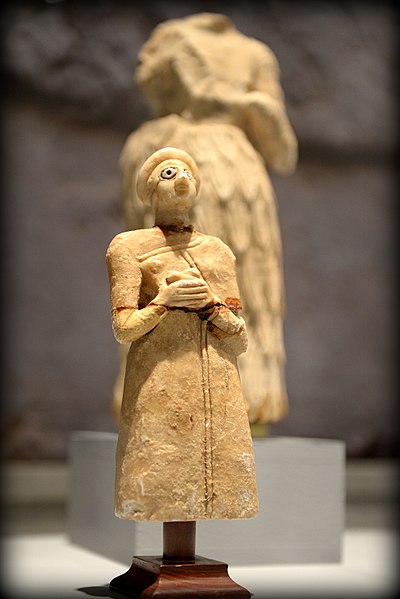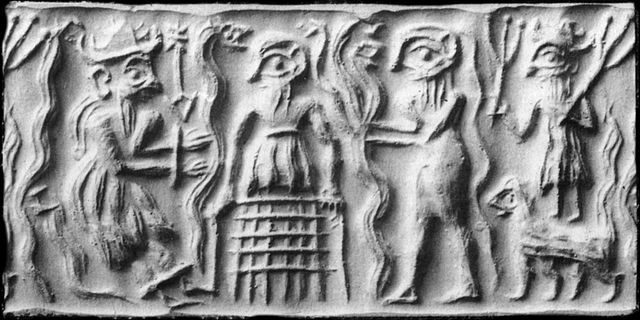Enlil, later known as Elil and Ellil, is an ancient Mesopotamian god associated with wind, air, earth, and storms. He is first attested as the chief deity of the Sumerian pantheon, but he was later worshipped by the Akkadians, Babylonians, Assyrians, and Hurrians. Enlil's primary center of worship was the Ekur temple in the city of Nippur, which was believed to have been built by Enlil himself and was regarded as the "mooring-rope" of heaven and earth. He is also sometimes referred to in Sumerian texts as Nunamnir. According to one Sumerian hymn, Enlil himself was so holy that not even the other gods could look upon him. Enlil rose to prominence during the twenty-fourth century BC with the rise of Nippur. His cult fell into decline after Nippur was sacked by the Elamites in 1230 BC and he was eventually supplanted as the chief god of the Mesopotamian pantheon by the Babylonian national god Marduk.

Statuette of Enlil sitting on his throne from the site of Nippur, dated to 1800–1600 BC, now on display in the Iraq Museum
Modern photograph of the ruins of the Ekur temple at Nippur
Cuneiform inscription on a diorite mortar from Nippur stating that this was an offering from Gudea to Enlil (c. 2144–2124 BC)
Gudea dedication tablet to God Ningirsu: "For Ningirsu, Enlil's mighty warrior, his Master, Gudea, ensi of Lagash"
Sumerian religion was the religion practiced by the people of Sumer, the first literate civilization found in recorded history and based in ancient Mesopotamia. The Sumerians regarded their divinities as responsible for all matters pertaining to the natural and social orders.
Wall plaque showing libations by devotees and a naked priest, to a seated god and a temple. Ur, 2500 BCE.
Plaque with a libation scene. 2550-2250 BCE, Royal Cemetery at Ur.
Statuette of a Sumerian worshipper from the Early Dynastic Period, ca. 2800-2300 BC
Ancient Sumerian cylinder seal impression showing the god Dumuzid being tortured in the Underworld by galla demons


